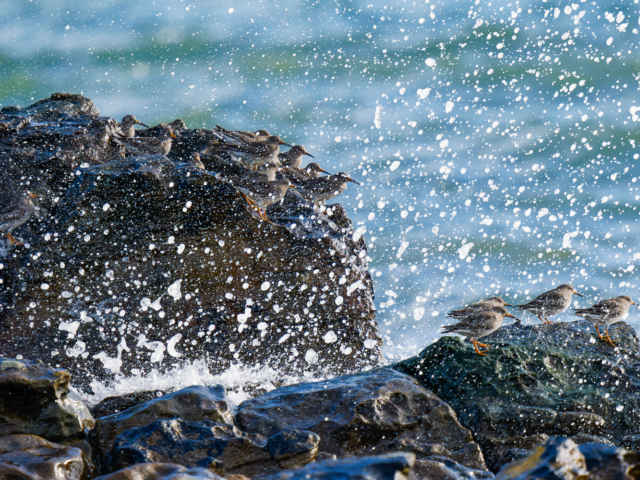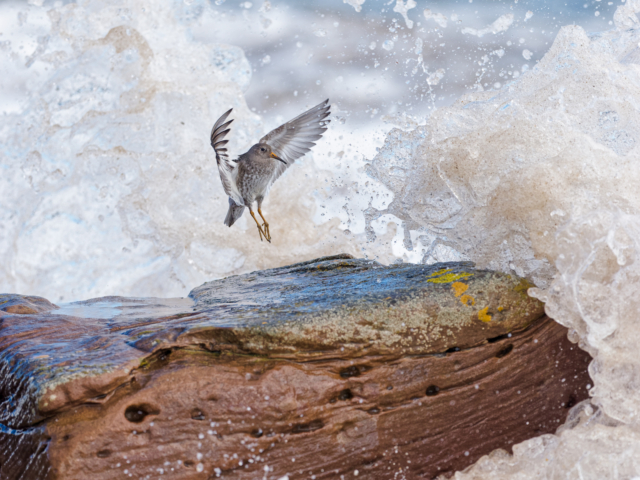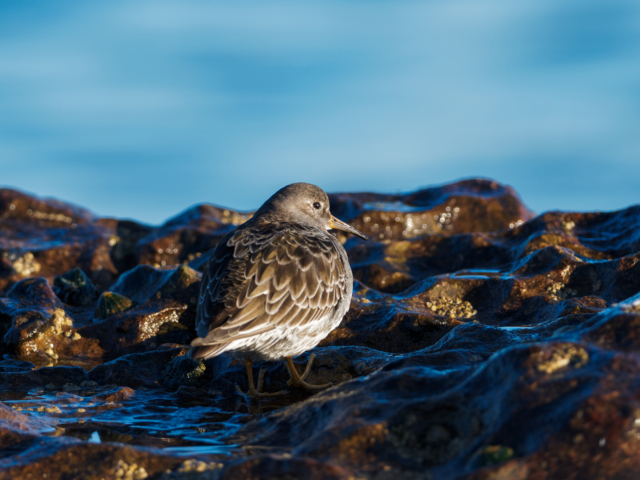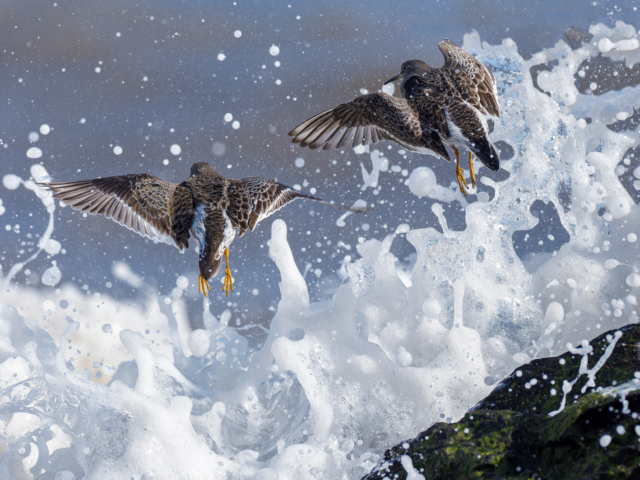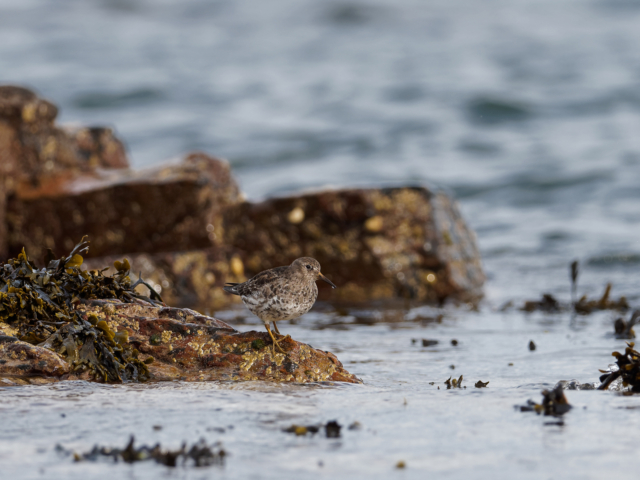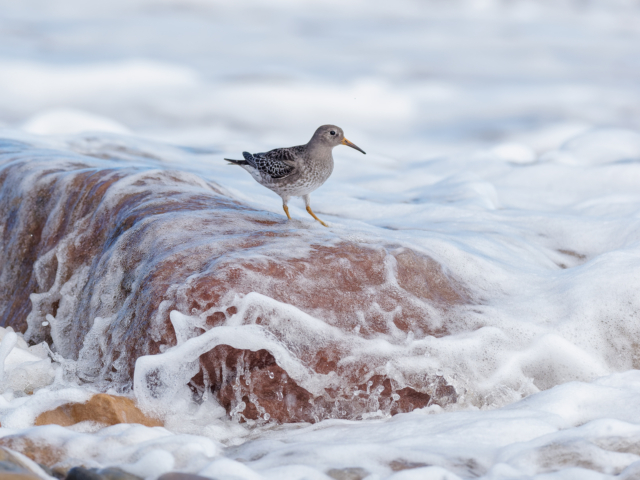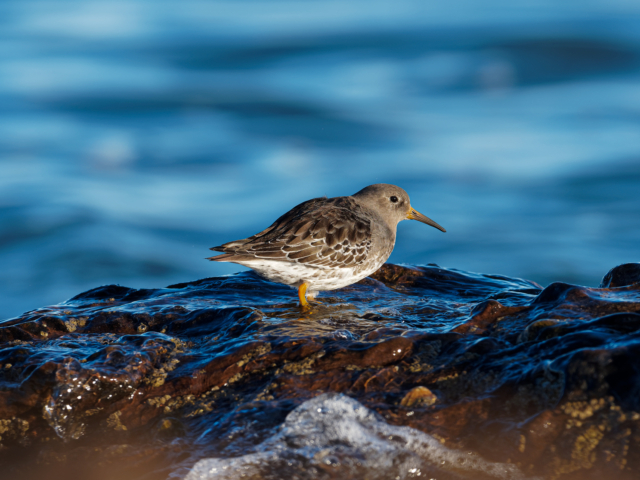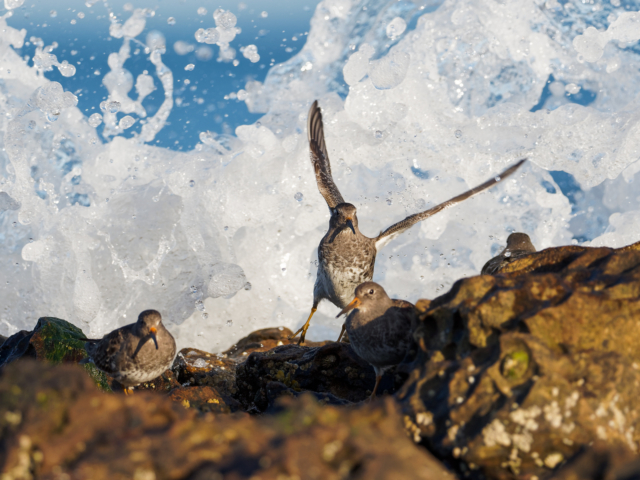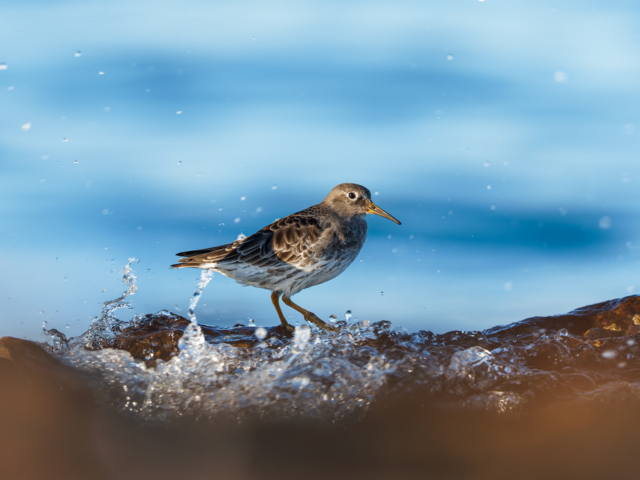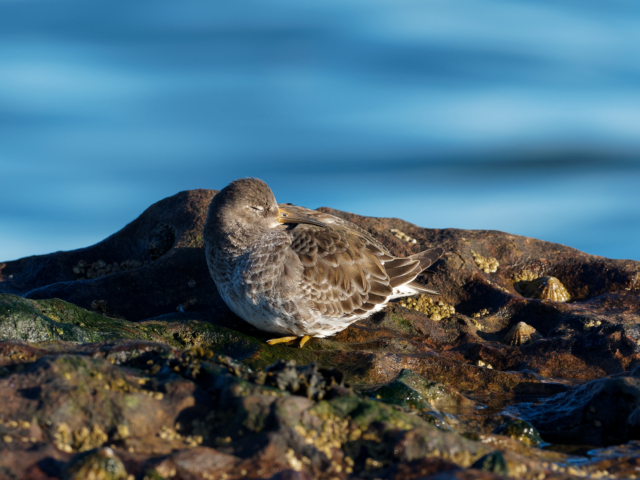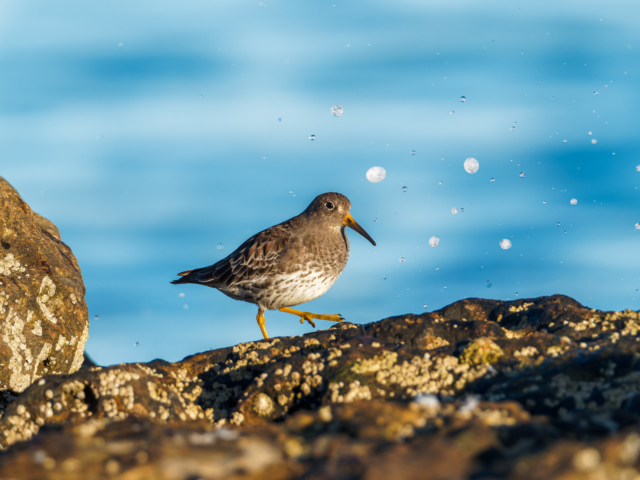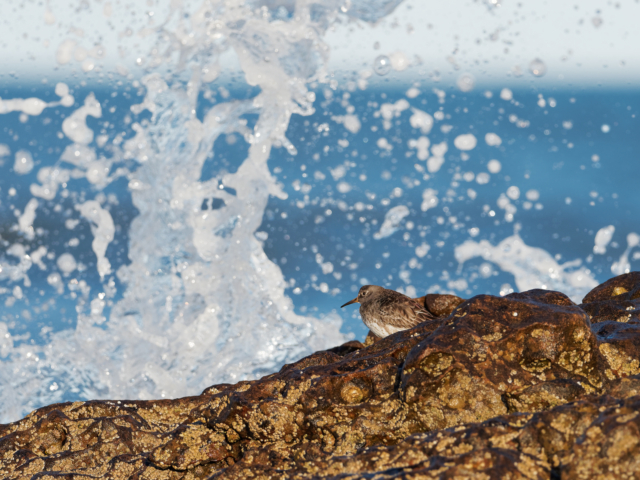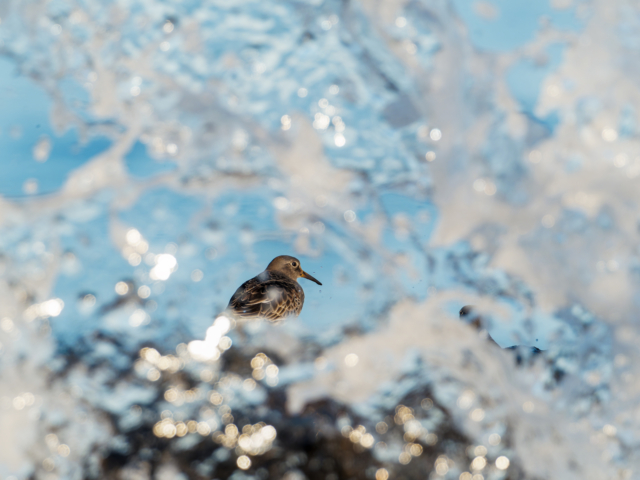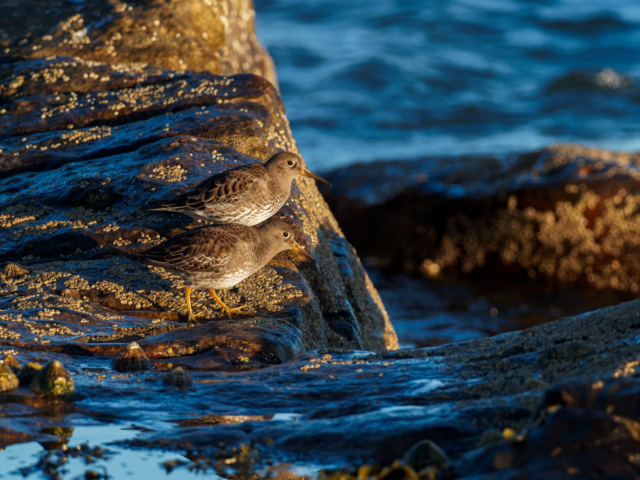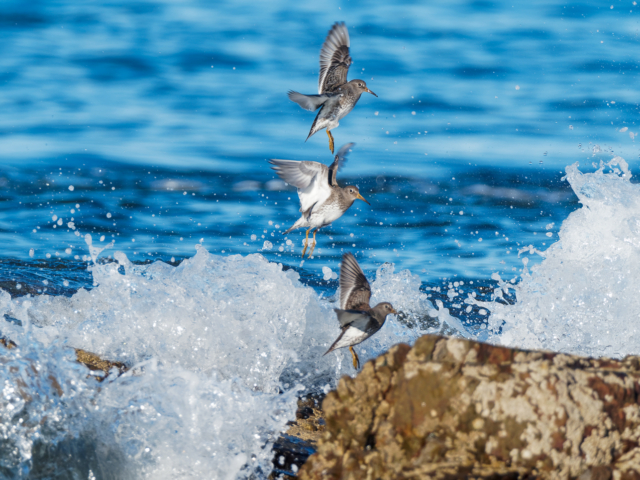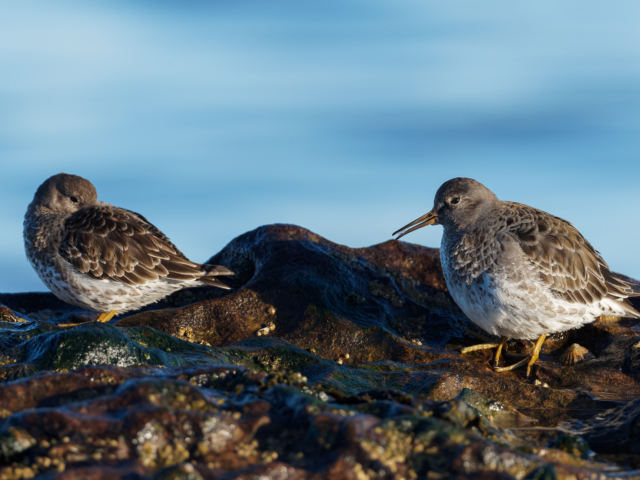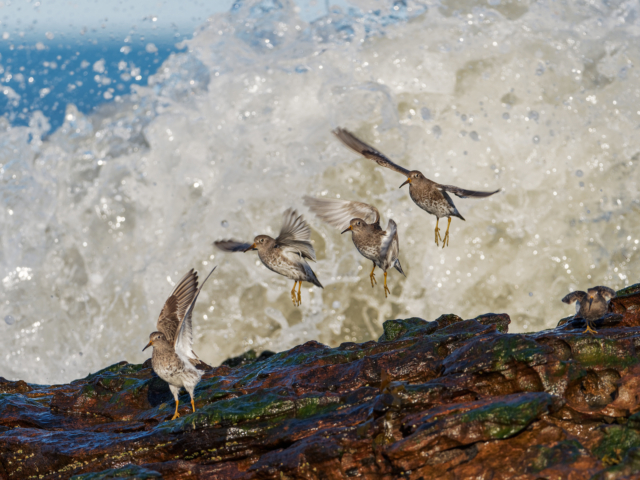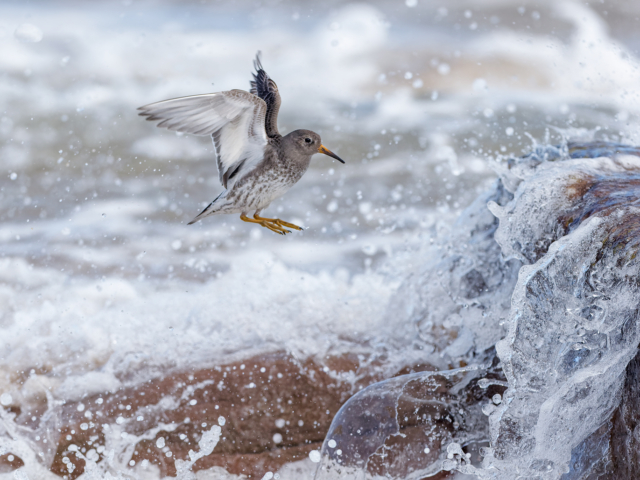Purple Sandpiper
Natures Wave Jumpers. With incredible agility and fearless spirit, purple sandpipers navigate the harsh coastal landscape like true wave jumpers. Perched on rugged rocks, they face the crashing waves head-on, leaping gracefully to avoid the salty spray. These resilient birds thrive where land meets sea, offering a captivating display of survival and elegance. A true spectacle for wildlife enthusiasts and photographers alike.
Purple sandpiper Gallery
Select on an image to embark on an immersive journey into the world of the Purple Sandpiper, a remarkable shorebird celebrated for its resilience. As the slideshow unfolds, you’ll be guided through its rugged coastal habitats and rocky shores, where this bird thrives amidst harsh conditions, gracefully leaping over incoming waves. Take a moment to admire its striking plumage—an elegant blend of grey and brown—and its vivid yellow-orange legs, a vibrant contrast against its surroundings. Tune in closely to the high-pitched calls echoing among these extraordinary birds, adding an auditory dimension to this captivating experience.
Purple sandpiper video
Watch – Step into the world of the remarkable purple sandpiper! This short video offers a glimpse of these resilient birds in their natural habitat along the seaweed-covered coastline. Watch as they navigate the challenging environment with grace and determination. I hope you enjoy this intimate look at their captivating lives.
A Look Inside the world Of the purple sandpiper
The Purple Sandpiper (Calidris maritima) is a fascinating bird. Here are some key details about this species:
-
Appearance: Medium-sized, stocky wader with a dark grey back and whitish underparts. It has a distinctive downcurved beak and bright orange legs. In flight, a white wing-stripe is visible.
-
Habitat: Prefers rocky, seaweed-covered coasts, especially during winter. They are often found on exposed shores and can be seen in flocks with turnstones.
-
Distribution: While they breed in northern Scotland, they are mainly winter visitors to the UK, with significant populations in Orkney, Shetland, and along the east coast of Scotland and northern England. They are rare south of Yorkshire, except in Devon and Cornwall.
-
Diet: Feeds on winkles, insects, spiders, crustaceans, and plants.
-
Conservation Status: Classified as Red under the Birds of Conservation Concern 5: the Red List for Birds (2021) in the UK. They are protected under the Wildlife and Countryside Act, 1981.
-
Behavior: Known for their hardiness, Purple Sandpipers can withstand cold waters thanks to special blood vessels in their legs. They are also remarkably faithful to their wintering sites, often returning to the same stretch of coast year after year.
The Purple Sandpiper breeds in the Arctic regions, making it one of the most northerly breeding shorebirds. Here are some key details about their breeding habits:
-
Breeding Range: They primarily breed in northern Scotland, particularly in the Scottish Highlands. Breeding pairs are also occasionally found in other parts of the Arctic.
-
Nesting Sites: Purple Sandpipers prefer to nest on rocky, exposed shorelines, often on cliffs or ledges where they can avoid predators.
-
Nest Building: Both male and female sandpipers participate in building the nest, which is a shallow scrape lined with vegetation.
-
Egg Laying: Typically, they lay 3-4 eggs. The eggs are pale greenish-blue with brown spots.
-
Incubation: Both parents share the responsibility of incubating the eggs for about 21-23 days.
-
Fledging: After hatching, the chicks are relatively mature and mobile from birth. They leave the nest shortly after hatching and are tended to by both parents.
-
Breeding Season: The breeding season usually starts in late May and continues through June.
Purple Sandpipers are known for their remarkable fidelity to their breeding sites, often returning to the same location year after year.
Purple Sandpiper
Listen – To the purple sandpipers squabbling amongst each other. Their high pitch calls can just be heard above the crashing waves.
More galleries
Feel free to explore further galleries that may pique your curiosity and inspire your love for nature.

